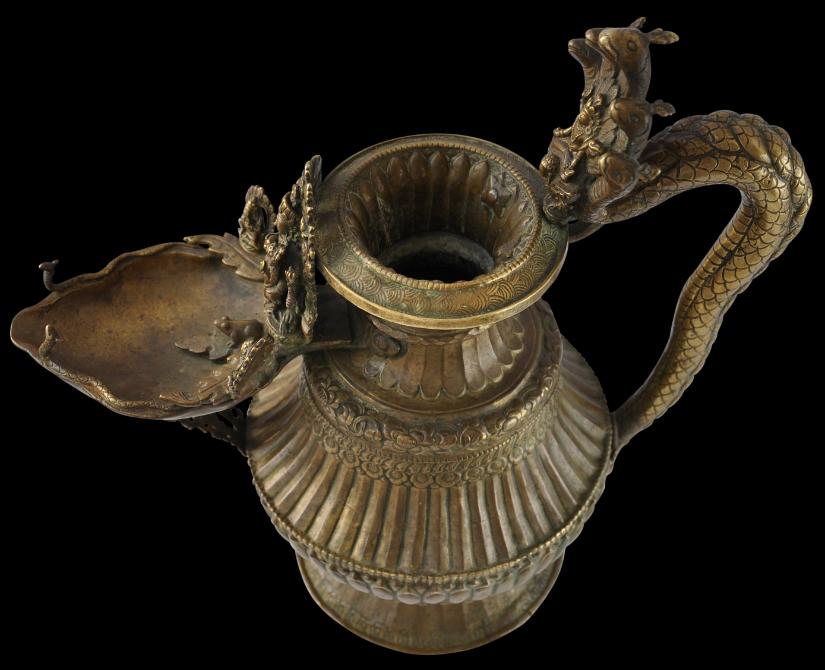
Nepalese Sukunda Lamp, Newar
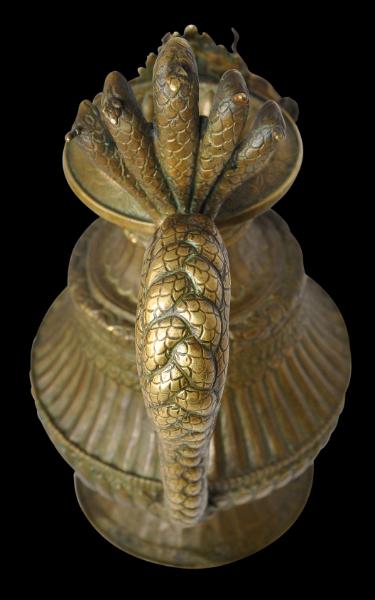

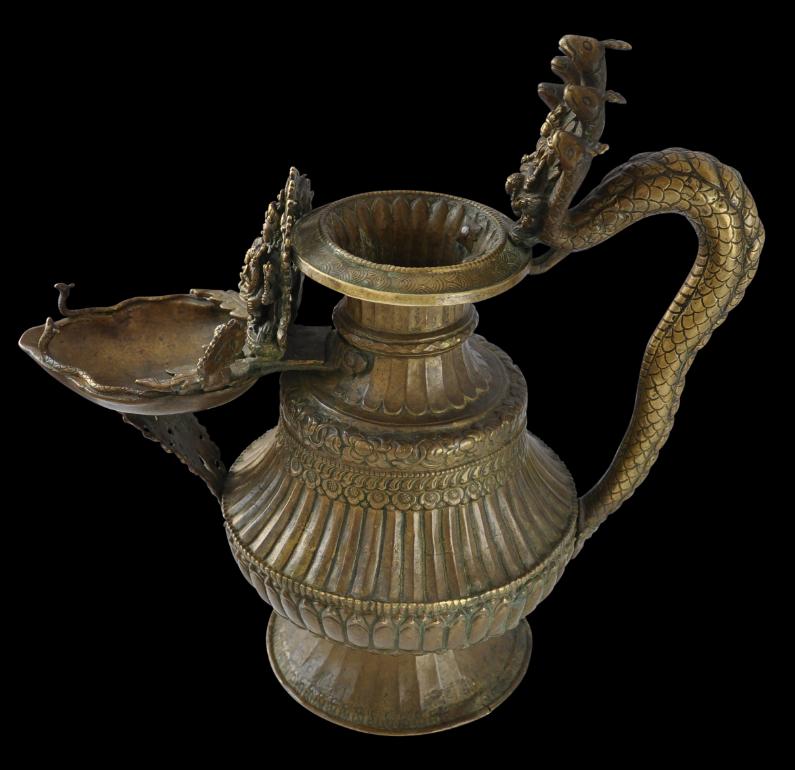
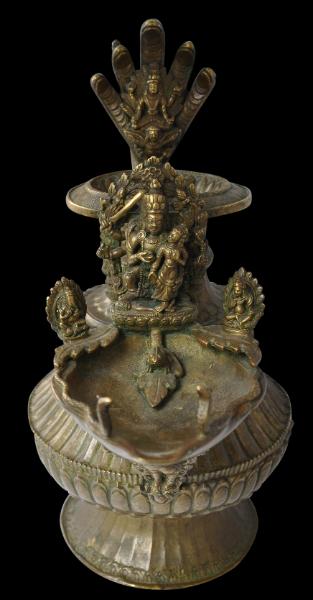
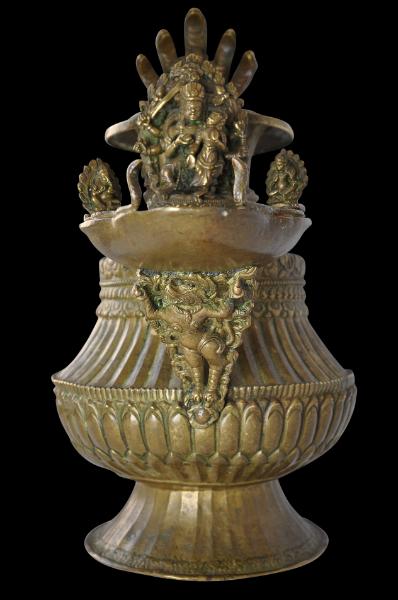
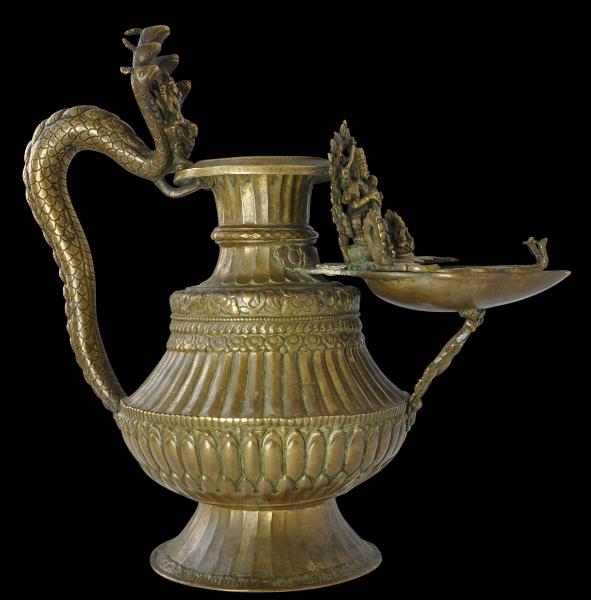
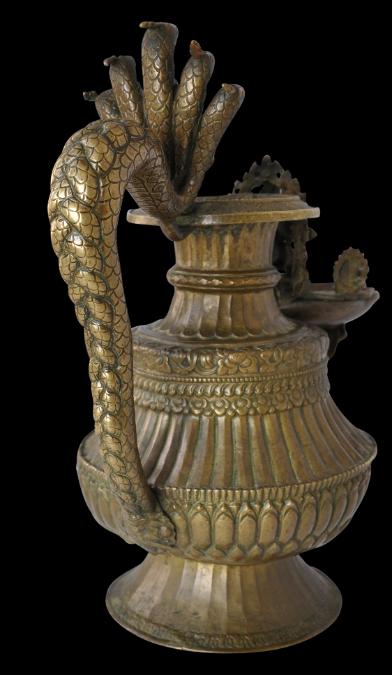
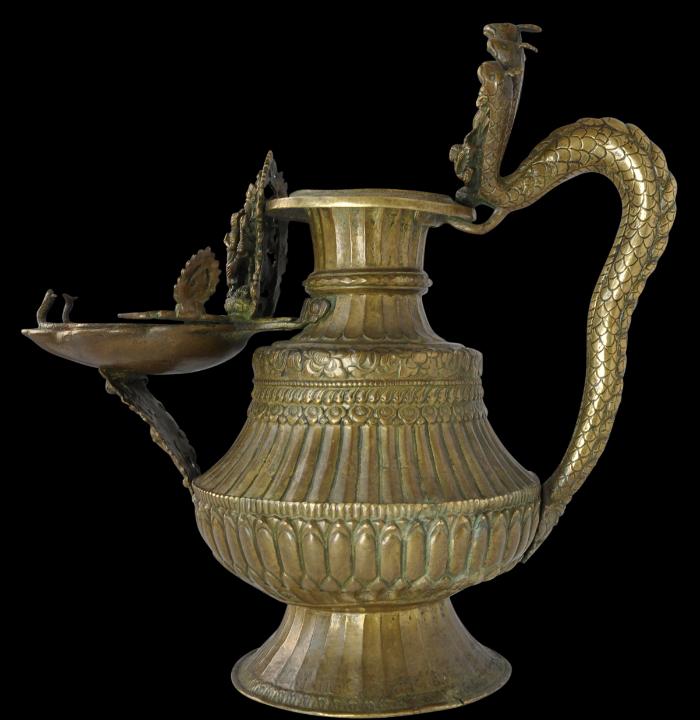
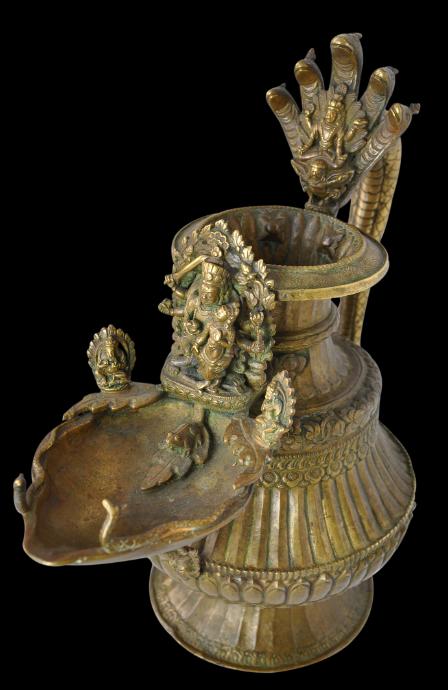
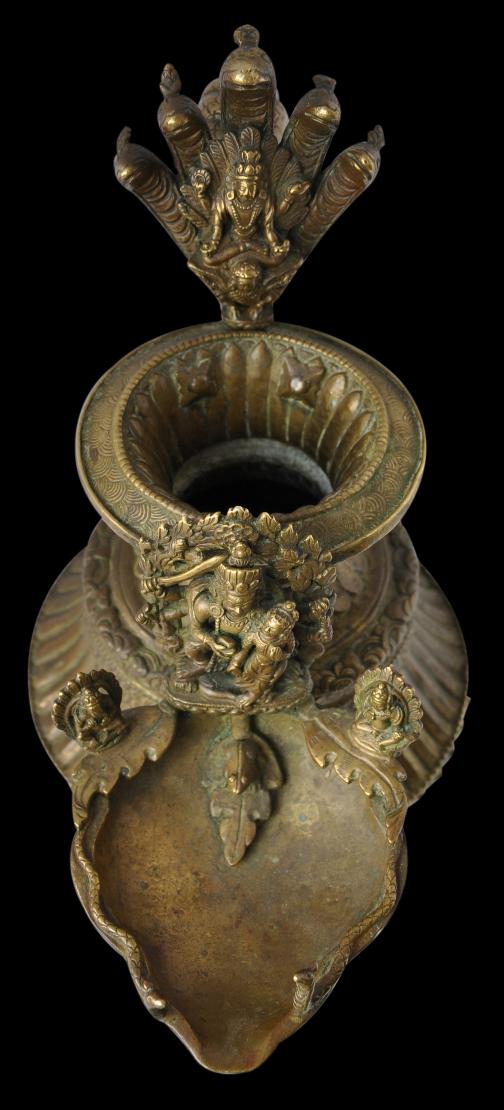
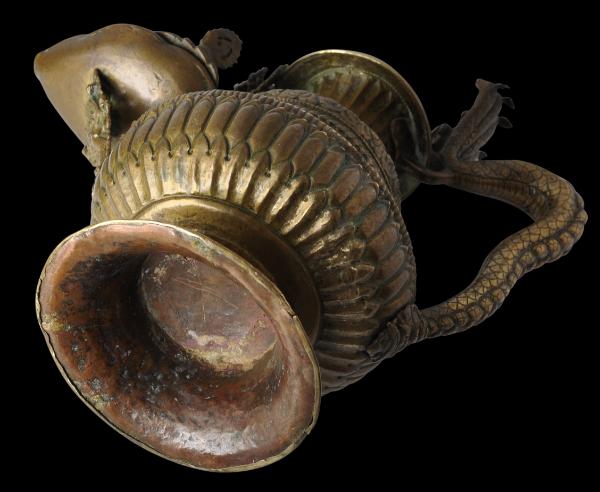
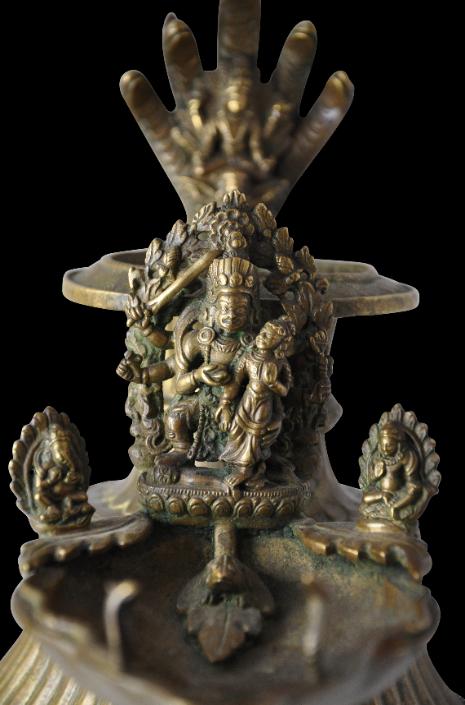
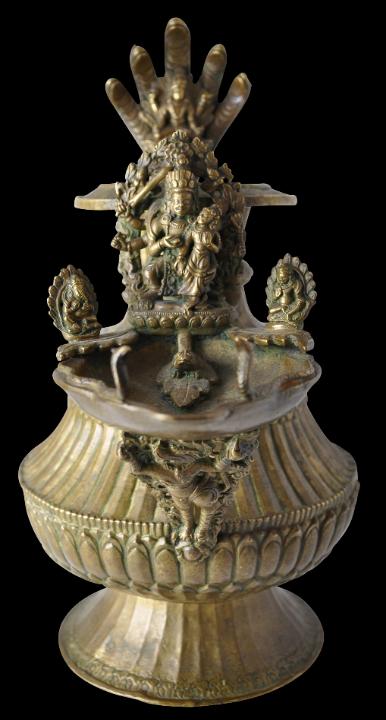
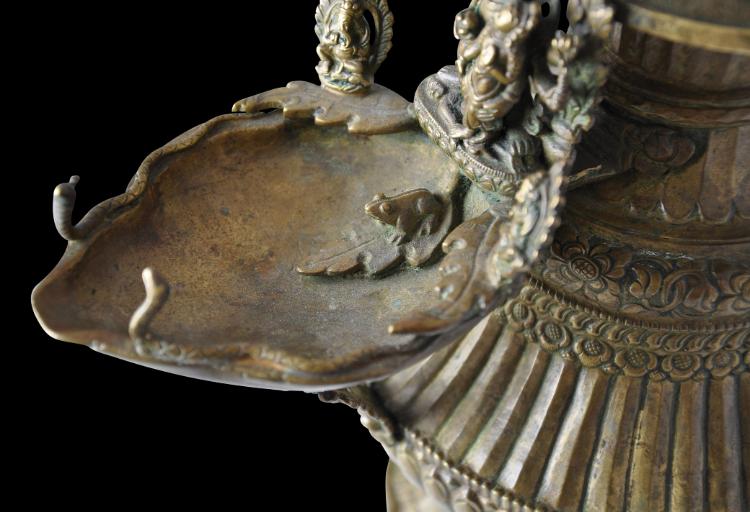
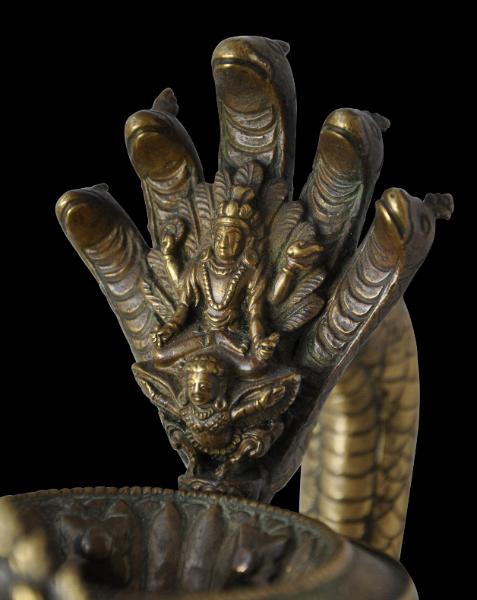
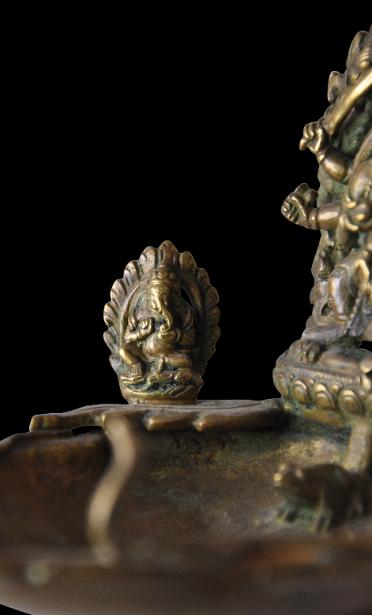
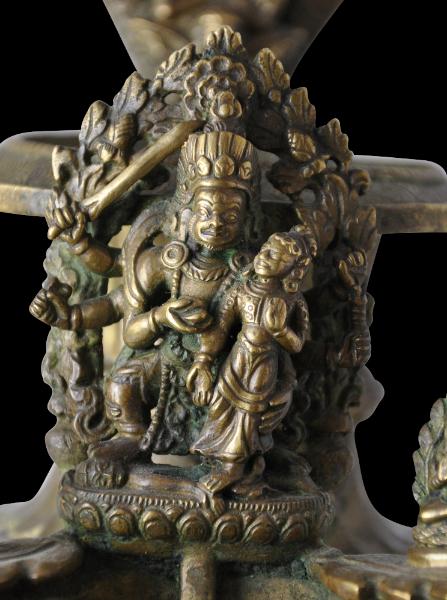
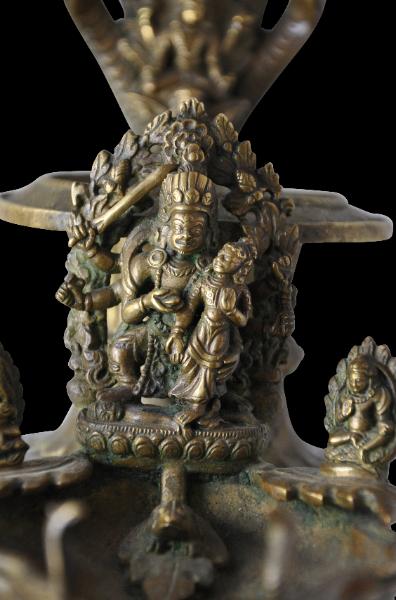
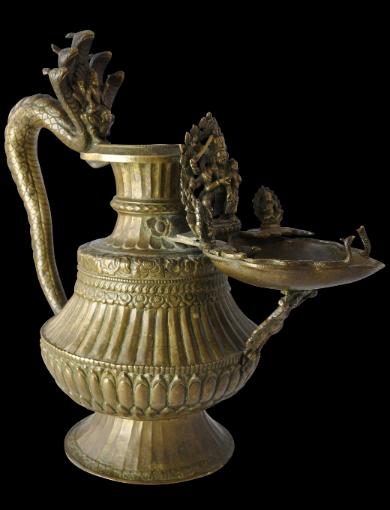
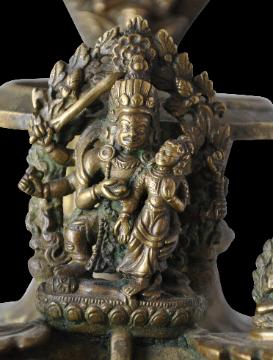
Inscribed & Repoussed Brass Sukunda Lamp
Nepal
18th-19th century
height: 29.5cm,
length: 31cm
Sukunda lamps are indigenous to the Newar people of the Kathmandu Valley. They are used for a wide range of religious and social purposes. The vase or pot part of the lamp is used for storing the oil – usually mustard oil in the Kathmandu Valley. This is ladled out and put on the shallow dish that projects from the front of the vase, where a wick is burned using the oil as fuel.
This example is the finest sukunda that we have encountered. The vase part is of hammered and repoussed brass, with additional copper components. The baluster-form body and flared foot are repoussed with ribs to emulate lotus petals. The interior of the neck of the vase also is decorated with elongated lotus petals.
The shoulder of the vase is decorated with two different bands of flowers separated by a lotus petal border.
The ridge around the opening flares and is engraved with repeated stylised cloud motifs. The handle is cast and engraved and in the form of a five-headed cobra. Nestled within the hooded canopy is a particularly finely-cast rendering of Vishnu, wearing a tall crown and with attributes such as a conch shell and a chakra in each o his four arms sitting cross legged atop his vahana Garuda. Garuda’s outstretched wings for a conch-like seat for his passenger and the tail feathers fan out to provide an aureole.
The lamp dish (the dalupa) is triangular in shape and decorated with two long snakes (naga) whose bodies run along the edge of the bowl and which rear towards the front on either side. A leaf is in the well of the dish and on this sits a well-cat frog. Leaves are on either side of the well and on the right is a small cast image of Ganesh, and on the other is a cast image of Kumara.
And between them, on a lotus platform, is a very finely cast, three-dimensional image of Bhairab (also known as Bhairava; a particularly tantric form of Shiva) shown with typical attributes such as a skull drum, skull cup, sword and a sceptre cast with three nodes to represent skulls. He stands on a recumbent figure with his right foot planted directly on that figure’s head. His consort Devi stands against his left knee. She displays gestures of charity and exposition and looks towards her lord. Rarely is Bhairab shown with his consort. (One such representation is illustrated in Pal, 1985, p. 128). The two are surrounded by a pierced leafy aureole which includes lotus bud stems.
The lamp dish is supported underneath by a pierced strut cast and engraved in the form of a rampant snow lion deity.
The lower part of the outer face of the foot is lightly engraved all the way around with a Newari inscription – probably naming the commissioner of the piece. The inscription might also mention Ganesh, as the bestower of success.
Sukundas play an important role in most Newar rituals, including birth, marriage and death rituals. The larger examples – those around 30cm in height – are reserved for marriage ceremonies. They are carried in the processions from the groom’s to the bride’s house and the return procession when the bride leaves her parent’s home. The example here would have been commissioned by a particularly wealthy Newar family.
This sukunda has an excellent patina. Its contours are smoothed and softened by age and use. The handle particularly has been smoothed by handling. This is a splendid piece.
Provenance
UK art market.
References
Friedman, M.S., Nepalese Cast Religious and Cultural Lamps, Pilgrims Publishing, Volume 2, 2005.
Lama, M.N., Ritual Objects & Deities: An Iconography on Buddhism & Hinduism, Lama Art, 2003.
Pal, P., Art of Nepal, Los Angeles County Museum of Art, 1985.
Sakya, Jnan Bahadur, Short Description of Gods, Goddesses and Ritual Objects of Buddhism and Hinduism in Nepal, Handicraft Association of Nepal, 2000.
Inventory no.: 2012
SOLD

